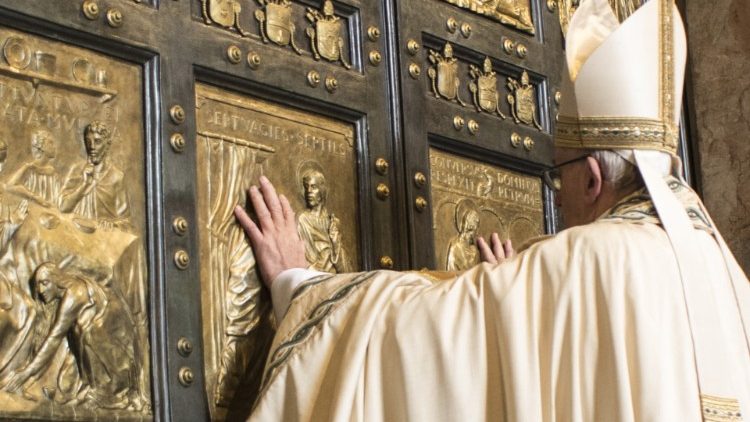As pilgrims prepare for the 2025 Jubilee, a priest, a tour guide and a theologian reflect on what the Holy Year means to them.
Starting this Christmas Eve, the Eternal City will open its gates to an estimated 35 million pilgrims for the 2025 Jubilee Year of Hope.
The Catholic Holy Year ordinarily occurs once every 25 years, and the Jubilee is a chance for the faithful to visit holy sites, perform pious works, and have their sins remitted. The Pope grants plenary indulgence to Jubilee pilgrims on December 24, with the opening of the Holy Door of Saint Peter’s Basilica.
The upcoming Jubilee follows 2024’s Year of Prayer, which Pope Francis declared as a preparatory period for personal meditations on God and the Catholic vocation. This year’s theme is Pilgrims of Hope, chosen to promote peacebuilding in a world threatened by climate change and ongoing wars.
Youth pilgrims called to the Eternal City
Steve Kerekes is the founder of WorldYouthDay.com and JMJ Pilgrimages, which organizes Jubilee itineraries for young Catholic students and parishioners in half a dozen countries. These youth pilgrimages are structured around visits to key sites like the Basilica of St. John Lateran and the Appia Way catacombs, culminating in an audience with Pope Francis at Tor Vergata.
For Kerekes, making a pilgrimage is vital to faith education, allowing for an ultimate close encounter with God that young people may not be able to access at home.
“Young people may be searching even more for the fundamental truths of the faith, and we teach them how to do that on pilgrimage,” Kerekes said. “Leaving their country behind is very important to free all the clutter and open them up to the grace of God.”
Kerekes sees the pilgrimage as an act of love, allowing faithful youth to replenish their spiritual wells so they can become forces for grace and mercy in contemporary culture.
“Living in the turmoil of the world you were meant to live in for your salvation – this is what God has chosen for you,” he said. “So I tell young people, don’t be afraid to give Him everything.”
Anglophones in Rome
At Saint Patrick’s American Parish in Rome, preparations are underway to welcome a 2025 influx of Anglophone tourists. Along with Americans, Saint Patrick’s welcomes regulars from Australia, Kenya, Ghana, and Singapore.
The church will expand its opening hours, along with providing a revised edition of its pilgrim guide from the last Jubilee in 2000. The pamphlet will provide practical advice and spiritual guidance about what it means to be a pilgrim, particularly for those not already travelling with a tour group or home diocese.
Rector Fr. Matt Berrios, a Paulist priest originally from the United States, understands the pilgrimage as a chance to deepen their relationship with God through sensory experience and historical understanding.
“When you come to Rome, especially to these pilgrimage spaces that are marvellous examples of the art and spirituality of their own time, you see different examples of the images people clung on to,” Father Berrios said. “Sometimes art, poetry and music are the best tools we have to express the definitional aspects of our faith.”
Reflecting on the theme of hope, Father Berrios pinpointed Catholic spirituality as one that calls on adherents to “be the light of the world,” harnessing their faith for the greater good.
“Our calling is about being a beacon of hope, not just journeying towards something for which we long,” he said. “Hope is, in part, defined by something outside of ourselves. In many ways, the Christian vocation is light, and you don’t light a lamp to put it under a basket.”
The way of the pilgrim
At its core, the Jubilee is a chance for the global Church to renew its commitment to being a life-restoring force on a fractured, war-torn planet. The word ‘Jubilee’ derives from the Hebrew jobel, a ram’s horn blown to proclaim a yearlong period in which farmers left fields to rest and recover.
1300 years after the first Catholic Jubilee year, the Holy Year remains a dedicated time and space where pilgrims can contemplate how to best care for life on Earth. In a world that centres productivity and individualism, the Jubilee gestures towards a more communal and sustainable way of living.
“Pilgrimage is a space where you reinforce this idea of coming together so that when you go back home, you really take something new with you,” says Filomeno Lopez, a writer and theologian from Guinea Bissau. “This is especially true for us Africans because we know that the most important part of life is togetherness.”
The act of a long and strenuous pilgrimage, too, is one Mr. Lopez says is integral to instilling empathy for the migrant experience.
In Mr. Lopez’s view, Christ himself came to Earth as a migrant from the heavens, and the human experience itself is an amalgamation of temporary journeys and quests for salvation. Thus, we are all guests in the natural world, and it is up to us to honour its sanctity.
“The nature of a human being is to be a pilgrim,” he said. “Jubilee is a period to stop for a while and think about what is really needed in life. As a pilgrim, we are here for such a short period. Before I leave, what can I leave to others?”
The Vatican News















